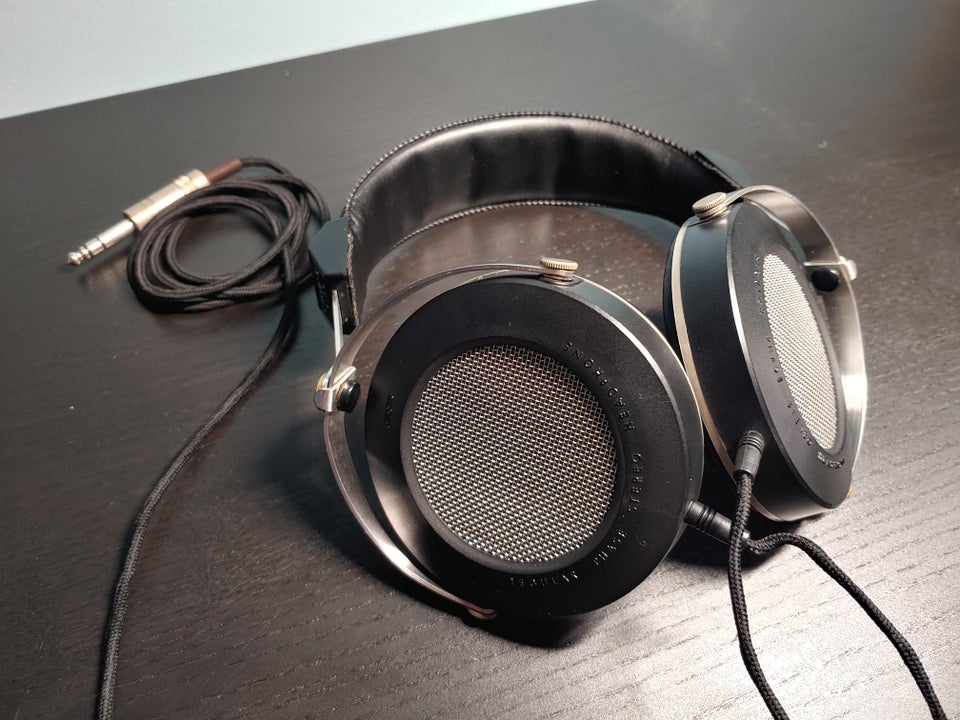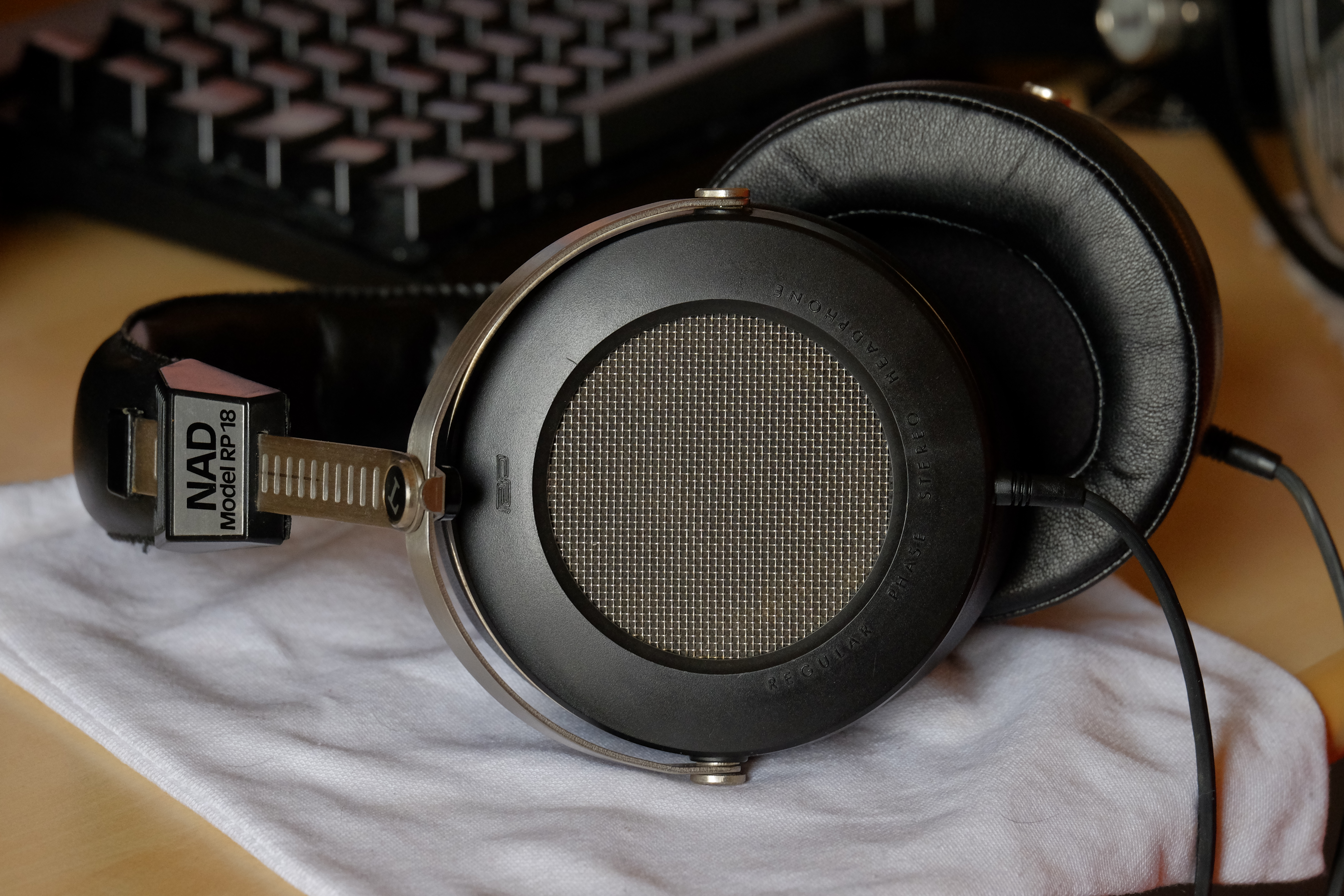Some time ago when I was reviewing the Dekoni Audio Blue, I wondered about the history of orthodynamic headphones. To my surprise, I had a hard time finding it in one place. I had to research for weeks to extract little bits of information. Unfortunately, the history of planars isn't that covered, at least not in one place. So, my goal with this thread is to bring people together, bring people with knowledge about their history together and continuously update this post to make sure it includes as much information as possible. Without further ado:
Fostex RP has a very interesting history, and it has a lot to do the technology used. While manufacturers like Audeze and Hifiman were making planar-magnetic (isodynamic/orthodynamic) headphones in the high-end market, Fostex focused on producing affordable planar-magnetic headphones — that’s essentially where it found its potential.
Being more curious about the widely unknown history of Fostex’s RP range, I found out that Fostex is given very little credit for its importance in the planar-magnetic field. After some hours of digging into the history of planar-magnetic headphones, I was barely able to source the first ever planar-magnetic headphone. Surprisingly enough, in 1972 Wharfedale produced the world’s first planar-magnetic headphone: the Wharfedale ID1. Who would’ve thought that a manufacturer like Wharfedale, a company that is most well known for their speakers, produced the world’s first planar magnetic set of headphones.

After that, I had a difficult time tracking down exactly which models were released between 1972 and later, however, I did find some notable information.
1974/1975 - Fostex launches its T50v0 model - making it the world’s second planar-magnetic headphone. It would only be sold until 1976 — the v0 series is generally less documented. From my research, the only headphone in the v0 series was the T50v0, making it the first T50 from Fostex.

The T50v0 would lead Fostex to become an OEM for other companies, and produce headphone models that are based off of the T50v0. These models would be:
1977 - NAD RP18 (it had two variations of the drivers: mylar diaphragm, and the kapton diaphragm)

1977 - Aiwa HP-500

70’s - Sansui SS100

1974 - Audio Technica launches its first headphone series - the AT-700 series.
*I cannot confirm whether the AT-700 series featured planar-magnetic technology, but I did find information that Audio Technica was among other manufacturers who were involved in the planar magnetic headphone market
1975/1976 - Yamaha launches its first planar-magnetic headphone: the HP-1. The HP-1 was designed by the well known Mario Bellini. Yamaha was apparently doing far better than other manufacturers in terms of sales for their orthodynamic headphones. This is mainly due to the fact that they utilized efficient marketing and follow-up series

Yamaha followed up with the following models:
1978 - YH-1000

1982 - YH-100

Yamaha YH-1 (left), Yamaha YH-100 (middle), Yamaha YH-1000 (right)
1985 - YHD-1

Mid 70’s - YH1

1977 - Fostex launches T10, T20, T30, and the T50 models (v1) - notable feature of the 1st generation were the round ear-cups & ear-pads, and round driver

1978 - Bang & Olufsen releases the U70 - designed by B&O’s well famed designer Jacob Jensen

1980s - Fostex finally introduces its Regular Phase (RP) technology (v2) - notable feature of the 2nd generation was the change of the ear-cup construction and the headband. This generation introduced the rubber headband and also started featuring the iconic “RP” logo on the ear-cups.


2002-2006 - Fostex launches T20RP MK2, T40RP MK2, T50RP - notable feature of the third generation was the change to a square-shaped driver. This would be a significant change, as though it completely changed the sound signature, but also all future models would implement the square-shaped driver. This generation followed the same rubber headband as the previous one.

All of this being said, there’s no doubt that there were several planar-magnetic headphones in the early years. However most of them didn’t see much success - mainly due to the difficult process of manufacturing these headphones, it wasn’t cost efficient for the manufacturers.
This is why Fostex played a major role in the planar magnetic field. Besides Yamaha, it truly brought the planar-magnetic technology to the commercial consumer market. Fostex’s RP series was widely used in studios, that’s how it raised to fame.
You can also notice that most of the early planar-magnetic headphones were produced for a limited time, meaning that many companies decided to leave the field of planar-magnetic headphones. If I had to make a guess, it would be that it was for business reasons and not meeting sales or profit goals.
The most interesting part is that Fostex was founded in 1973, which is only a year or two prior to the release of the T50v0. Nowadays, names like Hifiman and Audeze are the ones that people generally associate with “planar-magnetic” headphones, however those companies were founded more than three decades later - Hifiman in 2003, Audeze in 2008 — making Fostex one of the first companies to seriously step in the planar-magnetic headphone market.
History of orthodynamic (planar-magnetic) headphones
Fostex RP has a very interesting history, and it has a lot to do the technology used. While manufacturers like Audeze and Hifiman were making planar-magnetic (isodynamic/orthodynamic) headphones in the high-end market, Fostex focused on producing affordable planar-magnetic headphones — that’s essentially where it found its potential.
Being more curious about the widely unknown history of Fostex’s RP range, I found out that Fostex is given very little credit for its importance in the planar-magnetic field. After some hours of digging into the history of planar-magnetic headphones, I was barely able to source the first ever planar-magnetic headphone. Surprisingly enough, in 1972 Wharfedale produced the world’s first planar-magnetic headphone: the Wharfedale ID1. Who would’ve thought that a manufacturer like Wharfedale, a company that is most well known for their speakers, produced the world’s first planar magnetic set of headphones.

After that, I had a difficult time tracking down exactly which models were released between 1972 and later, however, I did find some notable information.
The Timeline
1974/1975 - Fostex launches its T50v0 model - making it the world’s second planar-magnetic headphone. It would only be sold until 1976 — the v0 series is generally less documented. From my research, the only headphone in the v0 series was the T50v0, making it the first T50 from Fostex.

The T50v0 would lead Fostex to become an OEM for other companies, and produce headphone models that are based off of the T50v0. These models would be:
1977 - NAD RP18 (it had two variations of the drivers: mylar diaphragm, and the kapton diaphragm)

1977 - Aiwa HP-500

70’s - Sansui SS100

1974 - Audio Technica launches its first headphone series - the AT-700 series.
*I cannot confirm whether the AT-700 series featured planar-magnetic technology, but I did find information that Audio Technica was among other manufacturers who were involved in the planar magnetic headphone market
1975/1976 - Yamaha launches its first planar-magnetic headphone: the HP-1. The HP-1 was designed by the well known Mario Bellini. Yamaha was apparently doing far better than other manufacturers in terms of sales for their orthodynamic headphones. This is mainly due to the fact that they utilized efficient marketing and follow-up series

Yamaha followed up with the following models:
1978 - YH-1000

1982 - YH-100

Yamaha YH-1 (left), Yamaha YH-100 (middle), Yamaha YH-1000 (right)
1985 - YHD-1

Mid 70’s - YH1

1977 - Fostex launches T10, T20, T30, and the T50 models (v1) - notable feature of the 1st generation were the round ear-cups & ear-pads, and round driver

1978 - Bang & Olufsen releases the U70 - designed by B&O’s well famed designer Jacob Jensen

1980s - Fostex finally introduces its Regular Phase (RP) technology (v2) - notable feature of the 2nd generation was the change of the ear-cup construction and the headband. This generation introduced the rubber headband and also started featuring the iconic “RP” logo on the ear-cups.


2002-2006 - Fostex launches T20RP MK2, T40RP MK2, T50RP - notable feature of the third generation was the change to a square-shaped driver. This would be a significant change, as though it completely changed the sound signature, but also all future models would implement the square-shaped driver. This generation followed the same rubber headband as the previous one.

All of this being said, there’s no doubt that there were several planar-magnetic headphones in the early years. However most of them didn’t see much success - mainly due to the difficult process of manufacturing these headphones, it wasn’t cost efficient for the manufacturers.
This is why Fostex played a major role in the planar magnetic field. Besides Yamaha, it truly brought the planar-magnetic technology to the commercial consumer market. Fostex’s RP series was widely used in studios, that’s how it raised to fame.
You can also notice that most of the early planar-magnetic headphones were produced for a limited time, meaning that many companies decided to leave the field of planar-magnetic headphones. If I had to make a guess, it would be that it was for business reasons and not meeting sales or profit goals.
The most interesting part is that Fostex was founded in 1973, which is only a year or two prior to the release of the T50v0. Nowadays, names like Hifiman and Audeze are the ones that people generally associate with “planar-magnetic” headphones, however those companies were founded more than three decades later - Hifiman in 2003, Audeze in 2008 — making Fostex one of the first companies to seriously step in the planar-magnetic headphone market.



